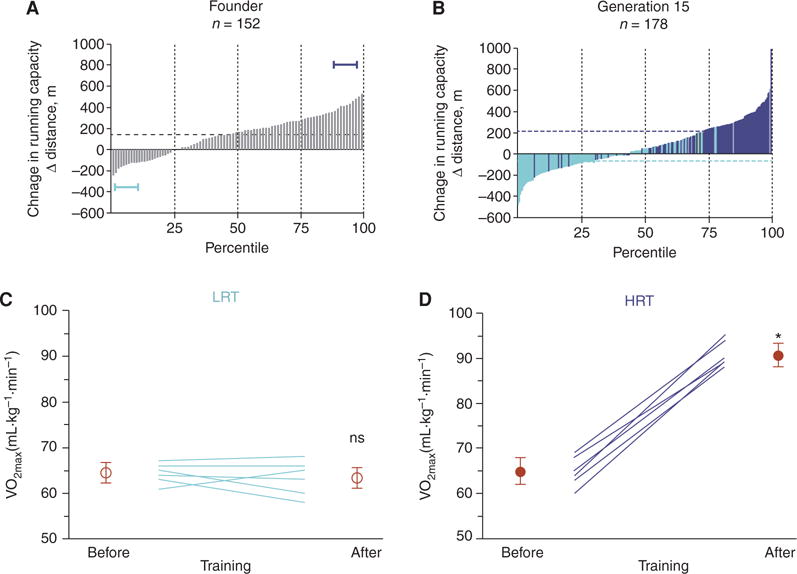Figure 5.

Selective breeding for low and high training response to treadmill running. (A) Rats were artificially selected for the change in running capacity in response to 8 weeks of training. Depicted is the training response for each of the 152 founder population rats. The horizontal brackets indicate the lowest and highest 10th percentile animals that were used as founders to start the low-response trainer (LRT) and high-response trainer (HRT) selected lines. (From Koch et al. 2013; reprinted, with permission, from the authors.) (B) The changes in running capacity with training for LRTrats (light colored bars) and HRTrats (dark bars) after 15 generations of training. Selection had caused marked divergence in training response between the lines. (C) Maximal oxygen consumption (VO2max) measured before and after 8 weeks of high-intensity aerobic interval training in LRTrats. Training failed to produce VO2max changes in LRTs. (D) High-intensity training produced on average a 40% increase in VO2max in HRTs. (From Wisloff et al. 2015; reprinted, with permission; from Elsevier © 2015.)
